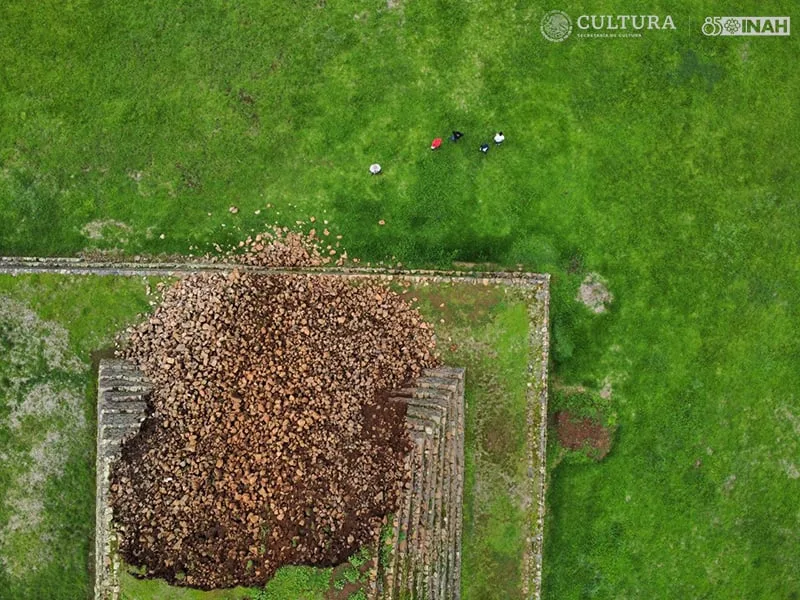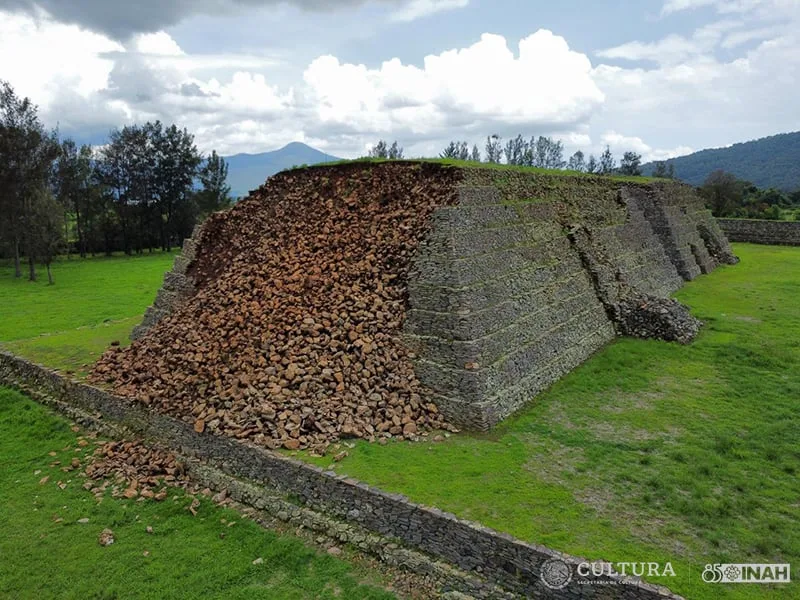An ancient pyramid partially collapsed in Ihuatzio Archaeological Zone, Michoacán, Mexico due to heavy rainfall. The 1100-year-old pyramid was a part of the Purépecha civilization. This collapse has sparked fear of impending doom among the tribals.
A pre-Columbian pyramid in the Ihuatzio Archaeological Zone partially collapsed following intense rainfall around Lake Pátzcuaro, according to a recent announcement by Mexico’s Instituto Nacional de Antropología e Historia (INAH). The pyramid, which has stood for over a millennium, suffered significant damage after the heavy downpours compromised its structural integrity.
The collapse was precipitated by water seeping into cracks that had formed due to prolonged droughts and high temperatures in the region. Despite having withstood the elements for centuries, these environmental stressors ultimately led to the weakening of the pyramid’s base.
Historical Monument
The Ihuatzio Archaeological Zone is situated just over four miles south of Tzintzuntzan, an ancient township on the shores of Lake Pátzcuaro. The area is believed to have been first settled around 900 CE. The site is built on an artificially elevated plateau. This was primarily used as a place of worship and featured ceremonial grounds and an astronomical observatory.
The collapsed pyramid was constructed around the same time by the ancestors of the modern-day Purépecha people, an indigenous group from northwestern Michoacán. The Purépecha culture emerged in the 14th century and became one of the most powerful civilizations in Mesoamerica. They had successfully resisted both Aztec and Spanish invasions.
Unlike many other Mesoamerican civilizations, the Purépecha left no written records, making sites like the Ihuatzio pyramids crucial for understanding their history and culture. Archaeologists believe that the collapsed pyramid served a crucial role in religious rituals, including human sacrifices to Curicaueri, the “Great Fire” deity associated with victory and sunlight.
According to INAH, personnel from the Instituto Nacional’s Michoacán Center have confirmed damage to at least six of the stepped sections on the pyramid’s southern base, affecting both the exterior and interior of the structure.

Cultural and Supernatural Interpretations
The collapse has not only sparked concerns among historians and archaeologists but has also resonated deeply with the descendants of the Purépecha people. Some have interpreted the event as a “supernatural sign of impending doom,” drawing parallels to similar occurrences before the arrival of the Spanish conquistadors, which were seen as signs of divine displeasure from the gods Nana Kuerhaepiri (Curicaueri) and K’eri Kurikweri.
Restoration Efforts
In response to the damage, INAH has launched an ongoing assessment to determine the best course of action for restoring the pyramid. The organisation has acknowledged the challenges of previous restoration efforts and plans to employ a multidisciplinary team of professionals to ensure a more effective repair process.
Fortunately, the pyramid was insured with the Agroasemex Insurance Company, which has been notified of the collapse. This insurance coverage will provide the necessary funds for the restoration work, allowing efforts to begin as soon as possible.
